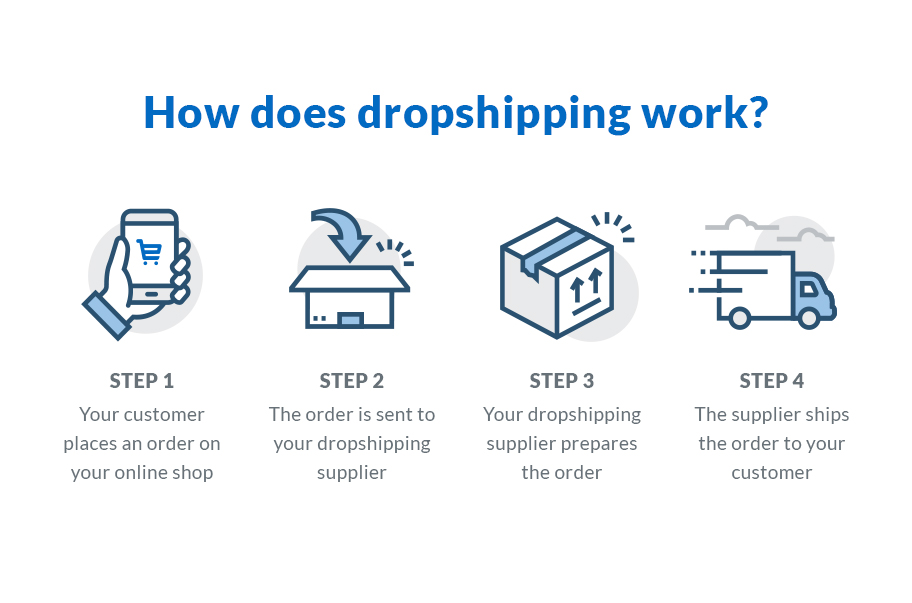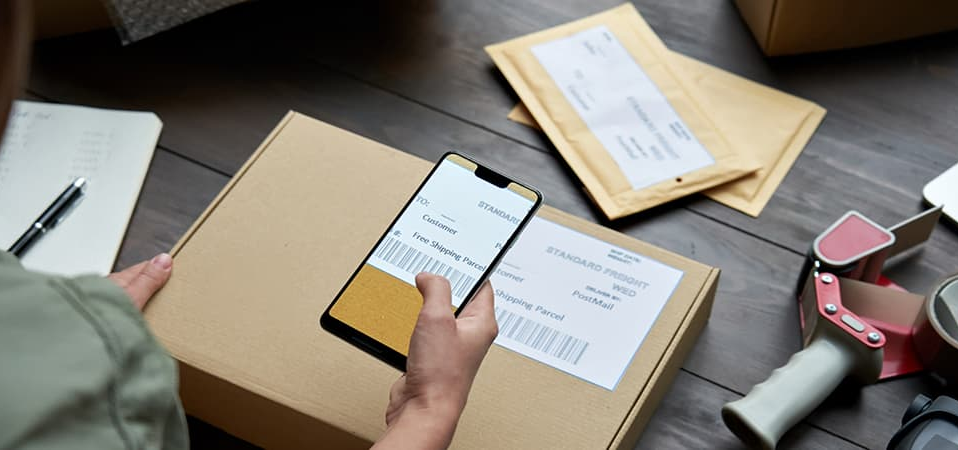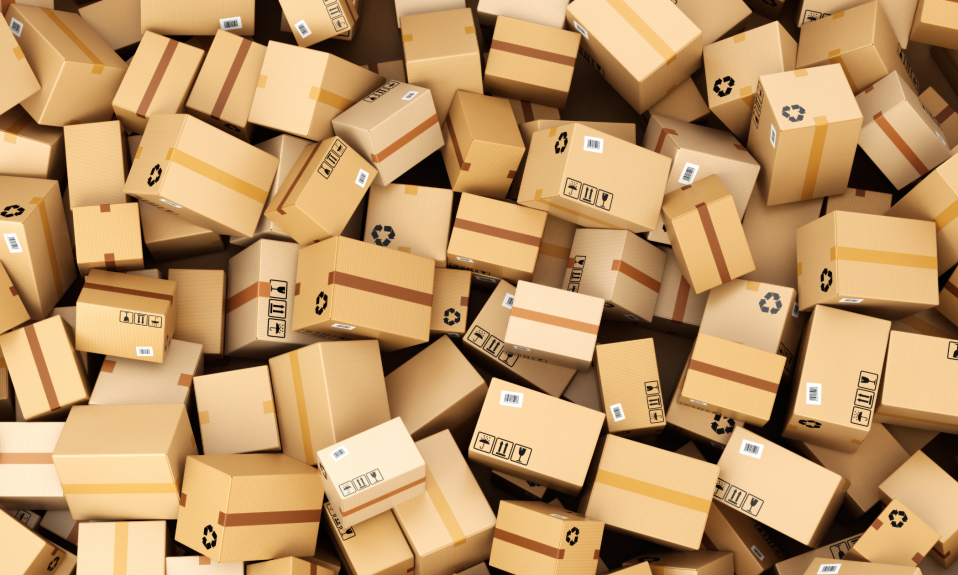In this life you can really take control, if you want. A 9-5 that pays the bills is more than a good goal to have, but what if I told you you could make that salary, on your own terms, in your own time, from your own house, being your own boss. Now I know that sounds salesy but it really is true.
Don’t get me wrong, Dropshipping is not easy, in fact it may be even more difficult than that 9-5 I spoke about earlier but you don’t get anywhere if you stay comfy. So let’s get you started on the basics of dropshipping.
What even is Dropshipping?
I’m glad you asked. Dropshipping is a business method where you wouldn’t keep the products you sell in stock, rather, you would purchase inventory from a third party wholesaler to fulfil orders that you receive.
Imagine working in a restaurant, the chef would make the food ready to be served, then the waiter would then take the food to the hungry diner, who paid for the food. In this example the chef would be the wholesaler/manufacturer, the dropshipper would be the waiter and the customer would be the diner. You would essentially be acting as a middleman.
How does this make me money if you’re just a connection? Good question. You would have your own website, which would be where the orders come in, from there you would automatically purchase stock for a lowered, pre-agreed wholesale price to then sell to the customer for your retail price. The difference between the wholesale price you pay and the sale you make is the profit.
Now that’s explained, let’s weigh up the pros and cons to see if it’s really worth it and not a get-rich-quick scheme.

Pros
- Low upfront cost – You can start dropshipping on a low budget, you would spend less than a traditional retailer as you would only need to buy stock when there’s a demand for it, no need to preemptively spend. Also, it’s cheaper than ever to launch your own ecommerce store (with us it’s just £34.99 a month and a free two week trial!).
- No experience needed – Now that doesn’t mean you can go in blindly, you still need to do research to make sure it’s right for you, but compared to other business models, you can get it going and start selling as a novice pretty easily, so it’ll only get better.
- Selling online has never been easier – Think about how many avenues there could be for you, you could sell something you’re really passionate about or even just sell relevant items to make more in the moment, you don’t have a limit to what you can sell and it can just take a simple DM or email to get in touch with a wholesaler.
- Low overheads – Dropshipping is all about how someone else has that stock so there’s no need to buy storage space, this means only a few expenses such as shipping and buying stock.
- Flexibility – I know ‘Be Your Own Boss’ seems like a buzz phrase but it’s real, you can work from anywhere, at any time, with a stable internet connection. Travel the world and run your business whenever you want, sounds too good to be true. Is it?
Cons
- Highly competitive – Dropshipping is a highly saturated market, this won’t stop you from exceeding but it will make it harder as everyone else in the market is doing the same thing. Good thing about that is there’s space for creativity, steer away from the mainstream and you’ll take the rest by storm.
- Supplier problems – Now this is tricky because it’s not controllable. Imagine if you have 30 orders in one day and your wholesaler has run out of stock or your delivery driver has lost your packages, you’re going to be the one dealing with that unfortunately. It’s not the end of the world as it’s very easy to contact other suppliers or new delivery services and depending on what you sell, customers may be more patient if they understand it’s not your fault.
- Personalisation – As you aren’t actually creating the stock, you won’t be able to personalise branding, this could make it harder to market your brand as the product isn’t yours. The best thing to do is embrace it and grow your brand through other methods until it can stand by itself eg – Aliexpress.
- Time differences – if your supplier is in a different country, there could be a communication issue about what time things will be shipped etc. The way to deal with this is to check in advance and agree on times when both you and the supplier are available.
Step-by-step on how to get started Dropshipping
Step 1: Make sure it’s what you want to do.
You won’t be motivated about something you’re unsure of and not fully committed to, you need to establish if it really is for you and if you want it to succeed.
Step 2 : Decide on your brand and business idea
Here is a crucial step as you want your brand to be consistent throughout your business and your selling point needs to be unique and appealing to your audience. You also need to figure out what you want to sell online. Check out our definitive guide to help you decide what products to sell online.
Step 3 : Marketing and competitor research
Who do you want to sell your products to? How are you going to appeal to them? How are you going to catch them when they are ready to make a purchase? What are my potential competitors already doing? These are the types of questions you need to be considering when you are doing your research.
Step 4 : Choose your supplier
Decide on a supplier depending on your product, availability, location and budget.
Step 5 : Set up your own ecommerce store
Choose your platform and design your store to appeal to your chosen demographic, this is important because you want your website to represent your brand well. If you have no experience in setting up a website, EKM have a very simple and easy to use platform with customisable designs and your own UK-based Account Manager.
Step 6: Get financially prepared
Dropshipping takes preparation, although it’s not too expensive to set up, you want to save your money where you can and spend it in the right places. This is where you need to be clever with your money and plan how to spend it correctly on your website, domain, supplier and delivery services.
Step 7: Market your store
Marketing can be difficult to get going but the easiest way is through PPC. Here you would have to spend money to promote your products to create more engagement over time. You can also use social media techniques such as influencer marketing etc.
Step 8 : Grow your shop and improve your brand
Once you take off, in order for your website not to stall, you’ll want to add new products, vary prices, offer sales and change marketing techniques in order to get more people to buy from you.
Conclusion
If you’ve reached this far you probably know if Dropshipping is for you or not, if not, take a look at our other blogs like “The do’s and don’ts of dropshipping” to help you make your decision, but when you’re ready to start, EKM are here with open arms, with a 14 day free trial and your own UK-based account manager to help you get going.
Featured Offer
For a cheap basic package with all you need to set up your own online shop, check out our £19.99 lite package
Our Dropshipping Blogs
The 3 best print on demand dropshipping suppliers for your side hustle








